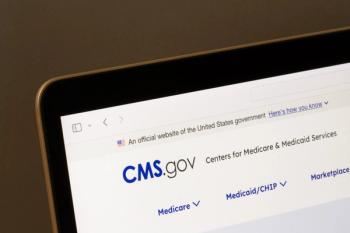
- Drug Topics January/February 2025
- Volume 169
- Issue 01
HIV Treatment, PrEP Have Come a Long Way, With More Work To Be Done | ASHP Midyear
A tour of modern antiretroviral and pre-exposure prophylaxis therapies included the latest updates in HIV management and prevention.
Since the first official report of AIDS was published in Morbidity and Mortality Weekly Report1 in 1981, HIV therapies have drastically changed. The first antiretroviral therapy, zidovudine (AZT), was approved by the FDA in 1987. “It was the only effective medication that we had for HIV,” said Ryan Tomlin, PharmD, AAHIVP, BCPS, a clinical pharmacist in HIV medicine at Trinity Health Grand Rapids in Michigan, “but it wasn’t actually that effective.”
For short periods of time, AZT would successfully suppress the virus. But treatment resistance would develop quickly, and progression to AIDS and acquiring other opportunistic infections was common. “There was real concern, because AZT had been on the market for [so long] with no additional drug development…that the drug company was content with making money off this one drug,” Tomlin explained during his presentation at the American Society of Health-System Pharmacists 2024 Midyear Clinical Meeting and Exhibition.2
Long-Acting Antiretroviral Therapy
Fast forward several decades, “we now have over 50 different medications on the market for the treatment of HIV,” Tomlin said. Among these medications are a collection of long-acting injectable therapies—including cabotegravir/rilpivirine (CAB/RPV; Cabenuva), lenacapavir (Sunlenca), and ibalizumab (Trogarzo)—that have changed the way providers approach HIV management.
Long-acting CAB/RVP is FDA approved for use in individuals who are virologically suppressed on another HIV regimen, have no history of treatment failure, and with no known or suspected resistance to either ingredient. “The way that I describe this medication is that we’ve have never really had any other agents quite like this for the treatment of HIV,” Tomlin said. “This is a new, innovative tool for our toolbox.”
And sometimes, Tomlin explained, new tools are used in ways that they weren’t intended to be. “Sometimes it’s a great success. Other times, they end up breaking the tool.” Health care providers began to ask questions about using CAB/RVP for other types of patients, such as those with poor adherence to oral pills or detectible viral loads.
READ MORE:
According to Tomlin, researchers have been working to answer those questions. Earlier in this year, researchers from the University of California, San Francisco presented results of a 24-week retrospective cohort analysis of patients with an HIV viral load ≥50 copies mL who received long-acting CAB/RVP. By week 48, 81% of the 59 patients were virally suppressed and remained on CAB/RVP, 93% were virally suppressed and remained on CAB/RVP or switched to an alternative therapy, and only 5% had viral failure, with emergent drug resistance.
Data are also available from the LATITUDE trial (
“This trial was actually stopped early because—lo and behold—folks who struggled to take oral pills, who stayed in the oral pill arm, continued to struggle to take oral pills,” Tomlin said. “When you have someone newly diagnosed with HIV and you hand them a pill and say, ‘Okay, in order to suppress this virus, you have to take this pill faithfully every day for the rest of your life,’ that’s a really daunting task.”
As a result of this research, “the IAS-USA Guidelines Panel actually put a statement out in support of use of these medications in patients with a detectable viral load,” Tomlin said. When supported by “intensive follow-up and case management services,” providers may now consider long-acting CAB/RPV in people who are unable to consistently take oral antiretroviral medications, who have a high risk of HIV disease progression, and whose virus is susceptible to both cabotegravir and rilpiverine.
In addition to CAB/RVP and other long-acting medications, researchers are studying the efficacy of islatravir, a nucleoside reverse transcriptase translocation inhibitor in combination with lenacapavir as a once-weekly oral pill. Results of these early phase 2 studies look good, Tomlin said, and phase 3 studies are ongoing.
Cardiovascular Care in HIV
“We’ve known for a little while that despite effective antiretroviral therapy, folks living with HIV have about a 2-fold higher risk of developing cardiovascular disease,” Tomlin said. And when these patients do develop atherosclerotic cardiovascular disease (ASCVD), it happens at a decade younger age. These data, then, beg the question: Should patients with HIV initiate statin therapy?
Researchers are working to find out. Patients with HIV, with a low to moderate risk of ASCVD and no other reason to already be on statin therapy were included in the prospective, double-blind, randomized, placebo-controlled, multicenter REPRIEVE trial (
“There was a statistically significant lower incidence of [major adverse cardiovascular events] in the pitavastatin arm, such that the trial was stopped early,” Tomlin said. But providers still grapple with these data. It can be disappointing for a patient whose disease is well-controlled with a long-acting medication that they now need to begin taking a daily pill.
READ MORE:
“Does everyone in our clinic over 40 get started on a statin? Do we just put them in a bowl out in the waiting room for everyone to take as they go home? Are all statins created equal?” Tomlin asked. At Tomlin’s clinic, they dug into the trial’s supplemental data and found that study participants who “got the most bang for their buck” had a 10-year ASCVD risk greater than 5%.
“As a result of [the study], HIV guidelines [were updated] with a statement that said for folks living with HIV, over the age of 40 that had a 10-year ASCVD risk greater than 5% but less than 20%, there’s a really strong recommendation to start a statin,” Tomlin said. “If their ASCVD risk is less than 5%, you can still consider it, but it’s a…much weaker recommendation.”
Pre-Exposure Prophylaxis
To appreciate how far pre-exposure prophylaxis (PrEP) therapies have come, Lacy Worden, PharmD, BCIDP, an infectious disease clinical pharmacist, antimicrobial stewardship at Corewell Health West, started by looking back at the first FDA-approved PrEP medication.
Based on the results of the iPrEx clinical trial (
“Although we’re seeing more and more PrEP prescriptions each year, things were not going—and still aren’t going—quite as well as we had hoped,” Worden said. A 2018 interim analysis found that of the estimated 1.2 million adults and adolescents indicated to receive PrEP therapy, only 220,000 received an oral prep prescription. “For all the math nerds in the audience, that equates to approximately 18% of all patients who could benefit [from PrEP].”
Most concerning, Worden continued, is the persistent disparity in new HIV diagnoses: African Americans represented 42% of all new HIV diagnoses, but only 6% of those eliglble received a PrEP prescription. Disparities were similar among Hispanic/Latino individuals, who represented 27% of new diagnoses, with only 10% of eligible people receiving a PrEP prescription.
“This really highlights some significant concerns that PrEP [is] not reaching who we think may benefit from it,” Worden said.
A 2021
US Preventative Services Task Force PrEP guidelines have also received an update. “In 2020, there were over 30,000 new HIV diagnoses,” Worden said, adding that this number may be an underestimate due to the COVID-19 pandemic. But, she explained, the USPSTF saw the same trends in 2023 as existed in 2018, “with huge disparities in race and risk factor, emphasizing again that PrEP is not reaching the most at-risk patients.”
Today, PrEP is indicated for all patients who are sexually active and who have either an HIV-positive sexual partner, a bacterial STI in the previous 6 months, and a history of inconsistent or no condom use with sexual partners, as well as individuals who have injected drugs in the previous 6 months and have either an HIV-positive injecting partner or who are sharing injection equipment.
Until recently, oral medications have been the mainstay for PrEP, Worden explained: FTC/TDF can be used in anyone at risk for HIV, including through injection drug use, while emtricitabine/tenofovir alafenamide (FTC/TAF; Descovy) is indicated for use in men and transgender women at risk for HIV through sex.
One barrier, though, is that “they are only recommended to be prescribed [for] 90 days at a time, to ensure that all patients have appropriate follow-up and are getting labs monitored regularly to make sure they haven’t developed an infection or are having any problems with the medication,” Worden explained. “But the biggest barrier with oral PrEP is that it only works if you take it.”
Fortunately, Worden continued, there have been significant innovations in the last few years. “We now have injectable drugs that are approved for PrEP,” she said. Cabotegravir (Apretude), an HIV integrase inhibitor, is the first of these options. It a 600 mg/3 mL dose injected into the gluteal muscle every 2 months. However, the injection technique requires patients to be seen by their health care provider, and “getting to the clinic every 2 months may be a barrier,” Worden said.
Researchers are also investigating
Worden also highlighted results of the PURPOSE-2 trial (
PURPOSE-3 (
Since initial publication, the National HIV and AIDS reduction strategy has been adjusted, with a new goal of reducing new HIV infections by 75% by 2025 and by 90% by 2030. A goal has also been set to increase PrEP coverage to 50% by 2025.
“Even if we find the patient who knows they have risk factors, and knows that these drugs exist, and has access to them, they may not want to take them because HIV is still a very stigmatized infection,” Worden said. “They may not want to pick up these medications from the pharmacy, [or want] their family or friends seeing them with this medication.”
“That’s one of the biggest barriers that still exists,” Worden continued. “Having lenacapavir that’s administered twice a year really does provide some optimism that we may be closer to ending the HIV epidemic.”
READ MORE:
Follow along with our coverage of the
References
1. CDC. Pneumocystis pneumonia — Los Angeles. MMWR Morb Mortal Wkly Rep. 1981;30(21):250-252.
2. Tomlin R, Worden L. Modern ART: A gallery tour of what’s new in HIV treatment and prevention. Presented at: American Society of Health-System Pharmacists 2024 Midyear Clinical Meeting and Exhibition; December 8-12, 2024; New Orleans, LA.
Articles in this issue
Newsletter
Pharmacy practice is always changing. Stay ahead of the curve with the Drug Topics newsletter and get the latest drug information, industry trends, and patient care tips.





















































































































































